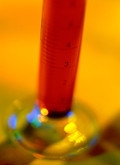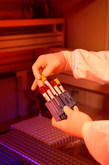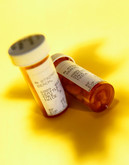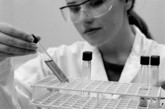Biosimilars/Research
Ongoing monitoring of biosimilar G-CSF (filgrastim)
Sandoz is carrying out ongoing studies to ensure the safety of its biosimilar recombinant human granulocyte colony-stimulating factor (filgrastim G-CSF). The MONITOR-GCSF study will recruit at least 1,000 patients from a minimum of 75 centres and follow them for a maximum of six cycles of chemotherapy.
Biosimilar substitution in the EU
Although many things—including regulations for licensing of biosimilars—are harmonised within the EU, the attitude towards biosimilars and their substitution within the different countries of the EU varies widely.
The case for health economic studies on biopharmaceuticals
In the not too distant future, patents will expire on some major biopharmaceuticals, such as interferons, insulins and granulocyte-colony stimulating factors [1]. This is likely to lead to the market entry of a number of biosimilars. A health economic approach to market access for biopharmaceuticals and biosimilars serves to aid researchers and decision makers in pharmaceutical companies and government to identify those products in the development process that are likely to be safe, effective and cost-effective. This approach should also guide the rationale for registration, pricing and reimbursement decisions.
Biopharmaceuticals: the start of personalised medicine
Biopharmaceuticals typically bind to their biological target, e.g. a protein linked to a disease [1]. Therefore, a biopharmaceutical is likely to be particularly efficacious in a specific subgroup of the patient population. For instance, trastuzumab is a monoclonal antibody that binds to the human epidermal growth factor receptor 2 (HER2) protein and has been shown to be efficacious in the treatment of patients with metastatic breast cancer whose tumours over-express HER2 [2]. This has implications for the clinical development of biopharmaceuticals in that it highlights the need to select the most responsive target population, to collect information on relevant patient characteristics, and to identify suitable biomarkers for responders [3]. It could be argued that, in this respect, biopharmaceuticals involve a paradigm shift towards personalised medicine.
Health economic challenges for biosimilars
Biopharmaceuticals represent a fast-growing segment of the pharmaceutical market, making up one third of products in the development pipeline and accounting for 9% of pharmaceutical expenditure [1]. Whereas the first generation of biopharmaceuticals tended to consist of first-in-class products addressing unmet clinical needs in small populations, e.g. bevacizumab for metastatic colorectal cancer, the current wave of products targets larger populations, e.g. insulins for type 2 diabetes mellitus [2].
Market access for biopharmaceuticals and biosimilars: a case study
Filgrastim is one of the first biopharmaceuticals for which biosimilars have entered the market. This case study illustrates the health economic challenges and the issues that arose in the R & D, registration, pricing and reimbursement of the biopharmaceutical and its biosimilars [1].
Biosimilar EPOs show the same or better quality
Researchers have found biosimilar erythropoietin (EPO) products have the same or even better quality compared with the original branded products.
Epoetin alfa and pure red cell aplasia
Most therapeutic proteins have the potential to induce an immune response. Cases of pure red cell aplasia (PRCA) were reported after the formulation of Eprex (epoetin alfa) was changed. It is now known that ‘the process is the product’ and the formulation cannot be changed without approval by the relevant authorities.
Approval of biosimilar epoetins: how similar are they?
A consensus has emerged that approval of biosimilars requires both biological and clinical evidence. The ‘comparability exercise’ requires consideration of a wide range of aspects, including analytical and physico-chemical characterisation by several methods, comparative biological assays, comparative immunogenicity assessment, among others. The use of different host cells for the biosimilar product and the comparator in principle is possible.
Phase I trial of a biosimilar erythropoietin
A Phase I clinical trial of Hospira’s biosimilar erythropoietin (EPO) in patients with anaemia associated with chronic renal failure and chemotherapy has started in the US.













